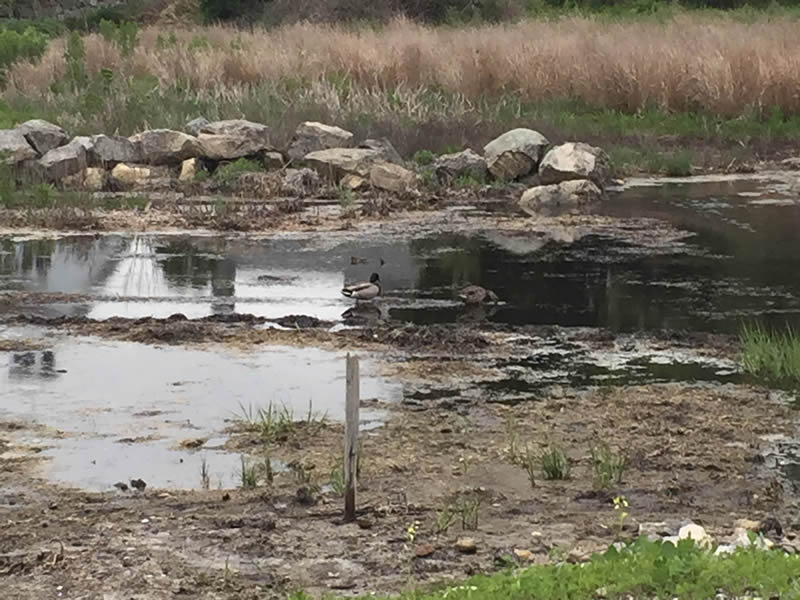Back to All Hike & Seek Properties
This small area has a big history. Take some time to read the sign on the property and some of the articles on the website for this preserve. For a while, there was a pottery factory here, and then a butcher shop, and finally a lovely open green space for the Borough. In recent years, this preserve has been severely damaged by strong storms, hurricanes, and high tides. Many hundreds of hours of stewardship have helped to restore some of the area by removing invasive plants and encouraging the growth of native plants that will help protect this land in the future. Please take the time to explore this special area closely; look for clues, and read the signage too.
Total Hike & Seek Targets: 7
SIGN

POTTERY
There are bits of pottery scattered near the shore. You are welcome to explore but we ask that you “take only pictures” and not remove pieces from the site. Find an interesting piece of pottery.
EELGRASS
The long strands of seaweed that collect along the shore grow in the ocean and are called eelgrass. It grows in large patches underwater and makes great habitat for young fish and shellfish. When it washes up on shore it may look messy, but it really helps provide protection for the sandy shores and marshes and provides great hiding places for lots of small insects and invertebrates. Find some eelgrass.
SEASHELLS & TIDE POOLS
When the tide is low, there are tide pools and small areas of beach that can be explored. See how many types of seashells you can find. The most common is the slipper shell, which washes up by the thousands at certain times of year. If you are careful, at low tide you can explore along the rocks and in the pools for snails and crabs.

MUDFLATS
Areas of mud and shallow water may look boring to us, but many birds with long legs and long beaks, (shorebirds, sandpipers, herons, and egrets) like to use these areas to look for small fish, shrimp, and other good food items buried in the mud. Are there birds here today? Is the open area muddy or covered with water? It changes with the tides.

MARSH GRASS
Only certain plants are able to grow in the wet, salty mud. Marsh grasses love this area. They provide homes and hiding places for many creatures and help to stabilize the marsh itself. Notice the spiky stiff grass (Spartina alterniflora) growing up in the mudflat area.




